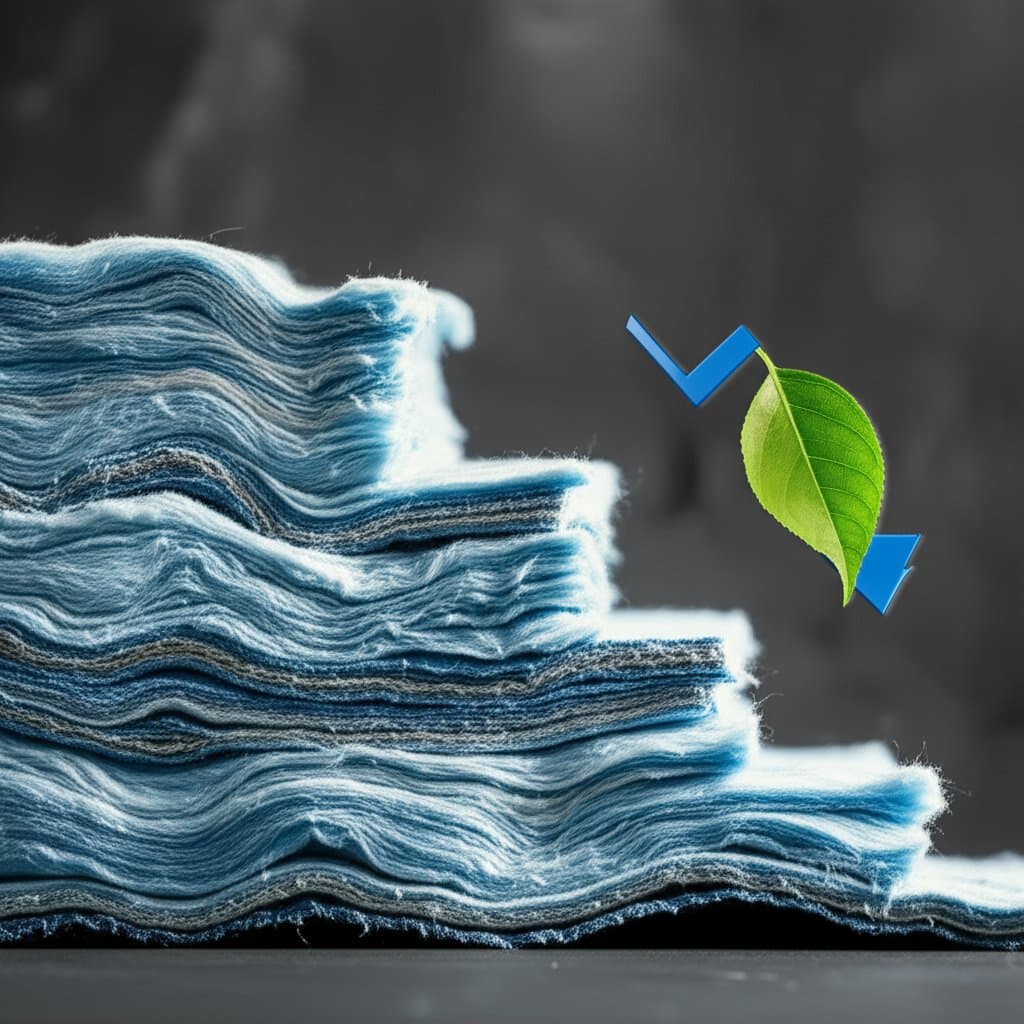Recycled Denim Insulation: Achieving 50% Cost Reductions in 2025
Visualize denim as the fabric of everyday clothing rather than a component of home insulation. This versatile material now transforms sustainable construction practices. Recycled denim insulation delivers cost savings of up to 50 percent, positioning it as a leading option among environmentally responsible building products.
Essential Benefits
- Recycled denim insulation costs up to half as much as conventional fiberglass options.
- It matches or exceeds thermal efficiency without causing skin irritation or relying on harmful chemicals.
- Production utilizes post-consumer jeans and textile remnants, diverting substantial waste from landfills.
- Enhanced affordability draws interest from builders and homeowners pursuing healthier, eco-conscious choices.
- Combined energy efficiencies and material longevity yield rapid returns on investment, often within several years.
Transition to Eco-Conscious Construction
Homeowners and builders recognize the environmental impact of conventional construction materials. Standard insulation, though functional, frequently includes irritants and volatile substances that compromise indoor air quality. Recycled denim insulation emerges as a superior, non-toxic, and economically viable substitute.
U.S. Environmental Protection Agency statistics reveal that textiles generate millions of tons of waste each year, with recycling rates remaining low. Denim insulation producers gather used jeans, fragment them into fibers, and treat them with borate-based fire retardants derived from natural sources. This process yields a robust, fibrous batt that excels in thermal regulation and sound dampening.
Comparative Analysis of Insulation Options
| Feature | Recycled Denim | Fiberglass | Spray Foam |
|---|---|---|---|
| Thermal Rating (R-value per inch) | 3.5 | 3.0–3.7 | 6.0–7.0 |
| Material Safety | Non-toxic, no itch | May irritate skin | Contains chemicals |
| Sound Absorption | Excellent | Moderate | Moderate |
| Recyclability | Fully recyclable | Limited | None |
| Average Cost (per sq. ft.) | $0.80–$1.20 | $1.00–$1.60 | $1.50–$3.00 |
These specifications highlight the rising popularity of recycled denim insulation. Advances in recycling techniques and greater availability of denim scraps have significantly lowered costs per square foot. In numerous areas, it now competes directly with or surpasses fiberglass in value, while enhancing occupant comfort.
Factors Driving Cost Declines
Several elements contribute to the substantial price reductions:
-
Expanded Production Scale
Automated sorting and shredding systems in textile recycling plants reduce processing expenses per pound of fiber. Manufacturers maintain high standards while offering insulation at more accessible rates. -
Growing Market for Sustainable Materials
Increased consumer preference for eco-friendly products supports larger manufacturing volumes, which minimize per-unit expenses. Builders note that project specifications increasingly specify recycled content for homes and businesses. -
Policy Support and Certifications
State and local governments provide rebates for green building components. Insulation derived from recycled materials often earns LEED credits, tax deductions, or energy rebates, potentially lowering overall expenses by 20 percent.
Advantages Extending Past Affordability
Beyond its competitive pricing, recycled denim insulation delivers tangible performance enhancements. The dense cotton structure captures air pockets efficiently, stabilizing interior climates and easing demands on HVAC systems. Additionally, it outperforms in noise reduction, suiting spaces like sleeping areas, workspaces, and entertainment zones.
Safety stands out as a primary advantage. Installation requires no specialized gear, unlike fiberglass. Free from formaldehyde and other emissions, it promotes superior indoor environments. Professionals value its straightforward manipulation and minimal on-site waste.
Laboratory evaluations confirm that structures with denim insulation achieve 10 to 15 percent lower energy use than those with typical alternatives. Such reductions accelerate cost recovery, particularly in regions with extreme temperatures where insulation efficacy proves critical.
Practical Implementations and Financial Returns
Builders nationwide document positive outcomes from incorporating denim insulation in renovations and ground-up builds. A residential contractor in Oregon observed, "Our clients value the natural texture of denim insulation and its role in fostering healthier interiors. The lower price point establishes it as a standard for moderate-budget endeavors."
An average residence demands 1,500 to 2,500 square feet of insulation coverage. Transitioning from fiberglass to recycled denim saves $500 to $1,000 in material expenditures at prevailing rates. Accounting for diminished utility costs, full recoupment typically occurs in three to five years.
In commercial settings, the soundproofing qualities prove invaluable. Facilities such as offices and educational institutions experience decreased background noise levels, boosting occupant satisfaction and operational efficiency.
Integrating Denim Insulation into Your Project
Consider recycled denim insulation for upcoming renovations or constructions. Follow these steps to proceed effectively:
-
Verify Regional Suppliers
While availability varies, prominent distributors can source it upon request. Select brands validated by independent certifications like GreenGuard or Cradle to Cradle to confirm ecological integrity. -
Assess Fitting Techniques
This insulation accommodates standard cutting tools and slots neatly into framing. Apply vapor barriers where needed and prioritize airflow in humid zones to optimize longevity. -
Quantify Comprehensive Benefits
Evaluate initial outlays alongside rebate opportunities and projected utility reductions. Consult energy specialists for tailored ROI projections using site-specific weather patterns. -
Manage Waste Responsibly
Excess materials can return to recycling centers, supporting a closed-loop approach.
Advancing Sustainable Home Upgrades
Adopting recycled denim insulation aligns cost efficiency with environmental stewardship. This material not only trims expenses but also elevates living standards through enhanced safety and performance. Builders and homeowners alike stand to gain from its integration into modern projects.







